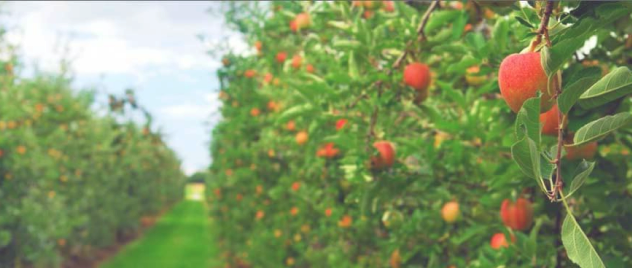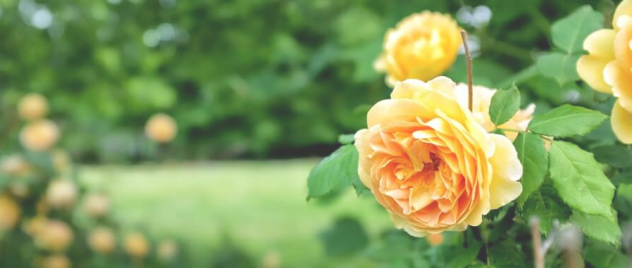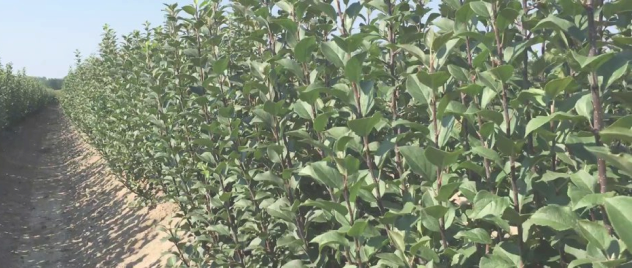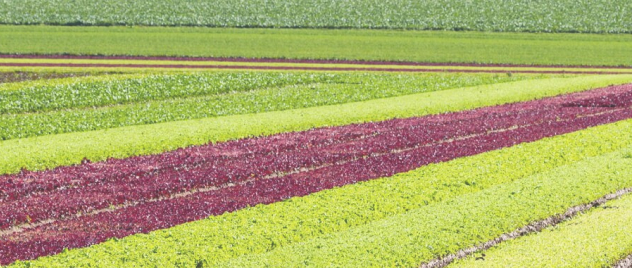BLACK CURRANT
Black currant (Ribes nigrum) is a deciduous shrub belonging to the Grossulariaceae family. Native to Europe and Asia, black currant is renowned for its small, dark purple to black berries, which are packed with a unique and intense flavor. The berries are highly prized for their culinary versatility and are used in a variety of products, including jams, jellies, juices, syrups, desserts, and liqueurs. Black currants are also rich in antioxidants, vitamins, and minerals, making them a nutritious addition to any diet. The black currant bush features lobed, dark green leaves that turn vibrant shades of yellow in the fall, adding ornamental value to landscapes and gardens.
BLACK CURRANT
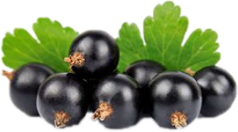
CULTIVATION
Black currants thrive in cool temperate climates and are well-suited for regions with distinct seasons. They prefer well-drained soil and full to partial sun exposure. Black currant plants are relatively low-maintenance and can tolerate a wide range of soil conditions, including loam, clay, or sandy soil. Regular watering is crucial during dry periods to support healthy growth and fruit development. Pruning is essential to maintain plant vigor, shape the bush, and promote better air circulation, reducing the risk of diseases. Black currant bushes are hardy and can withstand cold winters, making them suitable for cultivation in colder regions.
GROWING SYSTEMS
Black currant bushes have an upright growth habit, reaching a height of 1 to 1.5 meters (3 to 5 feet) at maturity. They are typically grown as standalone bushes, and their growth can be supported by appropriate training and pruning techniques. Here are a couple of common growing systems for black currants:
Bush System: The bush system is the most common method of growing black currants. In this system, the plants are allowed to grow naturally into a bushy form without any particular training. The branches develop from the base of the plant, and the dense foliage provides an attractive canopy. This system is suitable for home gardens and smaller orchards, as it requires minimal intervention and allows for easy access to the berries.
Trellis System: Black currant bushes can also be trained along a trellis system for improved support and easier management. The branches are selectively pruned and tied to the trellis, allowing for better airflow, sunlight penetration, and efficient harvesting. Trellising can be especially beneficial for larger-scale commercial cultivation, as it facilitates mechanization and simplifies tasks such as pruning, pest control, and harvesting.
TYPICAL SPACINGS
The spacing between black currant plants may vary depending on the specific cultivar, available space, and management practices. Here are some typical spacings for black currant cultivation:
Bush System: For the bush system, black currant plants are typically spaced between 1 to 1.5 meters (3 to 5 feet) apart in both the row and between rows. This spacing allows the plants to develop a bushy form and provides sufficient airflow and sunlight for each plant.
Trellis System: When growing black currants along a trellis system, the spacing between plants may be slightly closer. Typically, plants are spaced around 60 to 90 centimeters (2 to 3 feet) apart in the row and 1.5 to 2 meters (5 to 6.5 feet) between rows, depending on the desired trellis design and the vigor of the cultivar being grown.
See our full SELECTION of BLACK CURRANT PLANTS we have in our offer
TITANIA
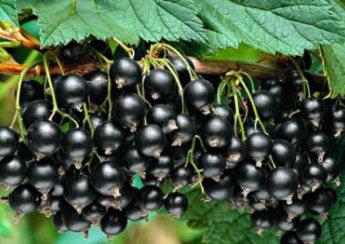
PLANT:
Titania black currant is a hardy and productive variety known for its vigorous growth and upright habit. The plants are compact and reach a medium height, making them easy to manage and harvest. They are highly adaptable to various soil types and can tolerate both cold and warm climates.
POLLINATORS:
Titania black currant is a self-fertile variety.However, for optimal fruit production, it is beneficial to plant another compatible black currant variety nearby to ensure cross-pollination and potentially increase yields.
FRUIT APPEARANCE:
The Titania black currant berries are medium to large in size and have a glossy, dark black color. They grow in tight clusters along the branches and are known for their excellent flavor and sweetness. The berries have a rich, aromatic aroma and a balanced combination of sweetness and slight tartness, making them ideal for both fresh consumption and culinary use.
HARVEST:
Titania black currants are typically ready for harvest in mid to late summer. They offer a bountiful yield, with the berries ripening uniformly, allowing for efficient picking.
COMMERCIAL USE:
Titania black currants are highly valued for their versatility and exceptional flavor. They are popular for fresh consumption, adding a burst of sweetness to fruit salads and desserts. They are also widely used in the production of jams, jellies, syrups, and baked goods. The attractive appearance and intense flavor of Titania black currants make them a favorite among growers and consumers alike.
BOSKOOP GIANT
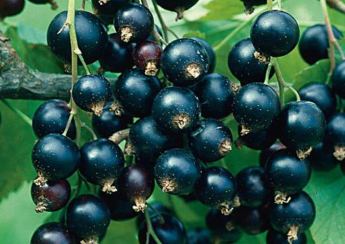
PLANT:
Boskoop Giant black currant is a robust and vigorous variety known for its strong growth and upright habit. The plants are medium to large in size and have a dense canopy of deep green foliage. They are adaptable to various soil types and can tolerate colder climates.
POLLINATORS:
Boskoop Giant black currant is a self-fertile variety. However, planting another compatible black currant variety nearby can enhance cross-pollination and potentially increase yields for optimal fruit production.
FRUIT APPEARANCE:
The Boskoop Giant black currant berries are large and have a deep, glossy black color. They grow in tight clusters along the branches and are prized for their exceptional flavor. The berries have a perfect balance of sweetness and tartness, with a rich, intense flavor that is highly sought after. The fruit is juicy and has a distinctive aroma, making it a favorite for both fresh consumption and culinary use.
HARVEST:
Boskoop Giant black currants are typically ready for harvest in mid to late summer. The berries ripen uniformly, allowing for efficient picking. The plants offer a generous yield, ensuring an abundant harvest.
COMMERCIAL USE:
Boskoop Giant black currants are highly regarded for their excellent quality and flavor. They are ideal for fresh consumption, adding a burst of flavor to fruit salads, desserts, and beverages. They are also popular for use in jams, jellies, sauces, and baked goods. The large size and intense flavor of Boskoop Giant black currants make them a favorite choice for both home gardeners and commercial growers.
BEN CONNAN
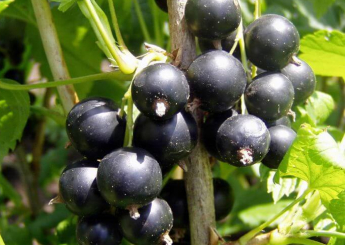
PLANT:
Ben Connan black currant is a compact and robust variety known for its vigorous growth and upright habit. The plants are medium-sized and have a dense canopy of dark green foliage, providing an attractive backdrop to the vibrant fruit clusters. They are adaptable to various soil types and can thrive in cooler climates.
POLLINATORS:
Ben Connan black currant is a self-fertile variety. However, planting another compatible black currant variety nearby can enhance cross-pollination and potentially increase yields for optimal fruit production.
FRUIT APPEARANCE:
The Ben Connan black currant berries are medium to large in size and have a striking deep purple-black color. They grow in tight clusters along the branches and are prized for their exceptional flavor and sweetness. The berries have a rich, juicy texture and a well-balanced combination of sweetness and tartness, making them perfect for both fresh consumption and culinary use.
HARVEST:
Ben Connan black currants are typically ready for harvest in mid to late summer. The berries ripen uniformly, allowing for efficient and convenient picking. The plants offer a generous yield, ensuring an abundant harvest.
COMMERCIAL USE:
Ben Connan black currants are highly valued for their outstanding flavor and versatility. They are ideal for fresh consumption, adding a burst of sweetness to fruit salads, desserts, and smoothies. They are also popular for use in jams, jellies, pies, and other baked goods. The vibrant color and delicious taste of Ben Connan black currants make them a favorite among home gardeners and professional growers alike.

